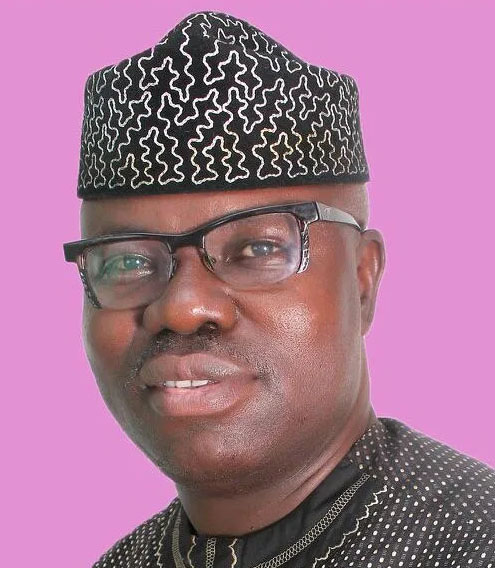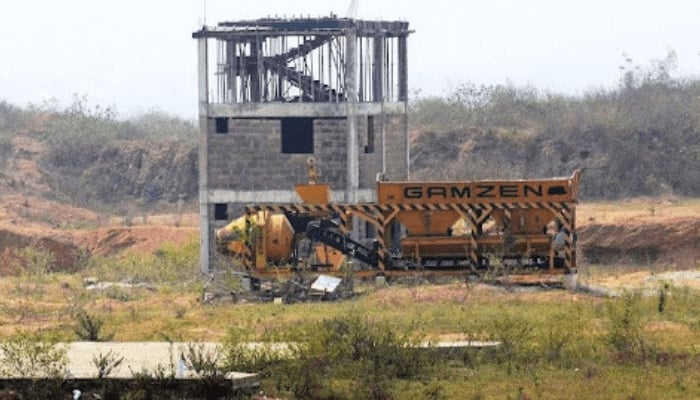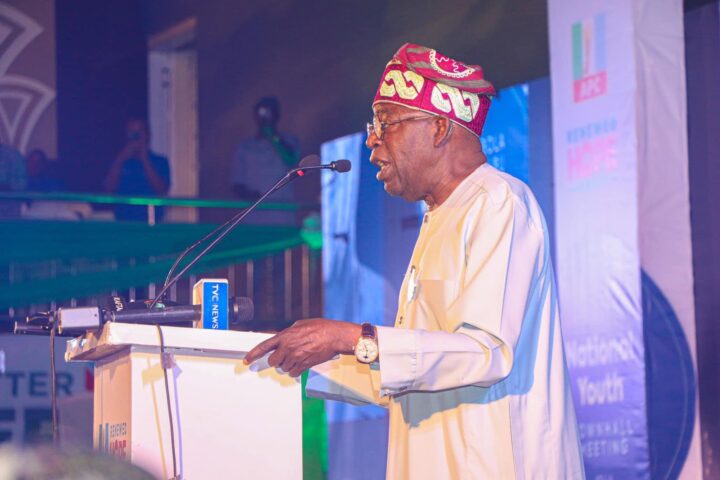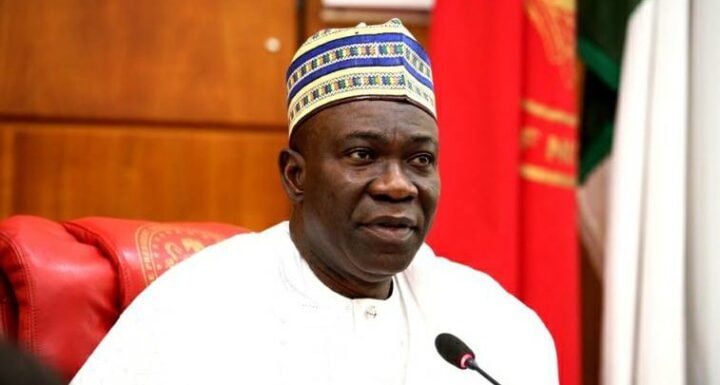Even on account of its historical relevance, the MKO Abiola International Cargo Airport, Ido-Osun, Osun should be a thing of joy to lovers of economic progress. Siting a project of that nature on an expanse of land set aside for the same purpose since 1936, some 87 years ago, is enough to rank it as one of the must-see, must-visit sites for tourists from any part of the world.
Let us remind naysayers, who may be uninformed of that juicy side of the project that the West African Frontiers Force had picked this location as the landing and take-off platform for the airlifting of its fighters, who fought along with the British Army from across West Africa in the Second World War.
History has it that Governor-General Bernard Bourdillon, representing the British Empire, had paid for the acquisition of this parcel of land by compensating the original owners and the sole purpose was to build on it an airstrip.
To put it straight and one could challenge anyone who has contrary figures, the total monies expended so far by government on the Airport is N2.7bn out of the N4.5bn initial budget.
I doubt if there is an amount too much to bring to fruition such dreams of many decades in this part of the country and this is why I shudder at various ridiculous amounts bandied around by those who have sought to discredit the project on account of phantom, unsubstantiated costs dubiously quoted to have been spent on the project. About 2017, I listened to a popular Nigerian Aviation expert and retired pilot, Captain Dele Ore, giving accounts how he landed aircraft on this airstrip as a young Nigerian pilot.
Advertisement
Of course, if the British Aviation experts had picked this site as its most preferred location for an airstrip in the whole of West Africa in the pre-independence decades, does it not represent a fait accompli that an advanced aviation project in the form of a cargo hub, a maintenance hub for fixed and rotary wing aircraft; and with firm commitments on patronage secured from Bombardier Aircraft Manufacturing company of Canada and the Nigeria Airforce and other ancillary facilities and services, should be natural accomplishments?
I recall Captain Ore saying at the time that “The Europeans don’t just act on instincts. They studied the Geography of West Africa. Because they were preparing for the Second World War, they knew that they would airlift troops from here to Sudan enroute Burma. They therefore sought for a flat plateau for that purpose. Ido-Osun was discovered as the most suitable ground because it has the highest flat top plateau in British West Africa. That was why an airstrip was built there for the exercise and that was how Ido Osun became the first landing strip in British West Africa.”
I should think for every rational mind, the above testimony of a known aviator in Nigeria sits well with the ambition of a state to have the MKO Abiola airport in place even without considering other many factors that make it a viable project.
Advertisement
Since the Rauf Aregbesola administration resuscitated this project from where it was left by the Olagunsoye Oyinlola regime, the arguments for and against have been fraught with the good, the bad and the ugly. What does Osun need an airport for? How many people can pay the price of an air ticket in that state? Is it reasonable and economically viable to have another airport with one located in Ibadan, the Oyo State capital and another one in Akure the Ondo state capital? The questions have been many and multiplying.
Capt. Dele Ore’s argument over the capacity of an airport to ignite development (economically) technically knocks out argument that smaller communities are not in need of airports and that such are exclusive preserves of mega-cities.
His position is backed robustly by the submissions of two researchers -Prof Jesse Schreger of the Harvard University and Prof Natalie Bau, of the University of Toronto – who co-authored a paper in 2017 on Infrastructure and Economic Growth: The Role of Airports.
The duo had argued that “the expansion of airports may increase economic growth through a variety of other mechanisms. Airports may make it easier to transfer technological know-how and reduce the costs of importing inputs and exporting products.”
Advertisement
This would further corroborate Osun’s expectations and Ore’s assurances that “The kind of job, manpower it’s going to provide for this state, this state won’t be able to cope with it.”
He had further assured that “you will have to employ people from other states because you would have taken care of your own citizens. Just with one stroke, you will then have the capability to get even processed produce because there is no way this government won’t get encouragements for more agricultural activities; export raw materials and even finished products. This means that the factories that will power all these activities will be all situated around the place and provide jobs for our people.”
I recall that about the time that Capt. Dele Ore espoused the need for the airport and the need for a review of the initial project scope and size, facilities not initially included had been added with the sole aim of raising the standards of the projects and making it become more impactful on the host community.
Those who raise arguments over the upward review of the project cost from the initial N4.5bn fail to note the additional features which a committee recommended midway which jerked the cost to about N11.7bn
The new works and modification that brought about that upward review include the initial runaway which was 3.0klm but was increased to 3.5km. Available works documents show that the scope of the works increased on the taxiway and Apron, Terminal Building, Fire station and with an additional one floor added to the Control Tower of the airport.
Advertisement
Others include the new Administrative Block, new Fire Port, the Powerhouse, the Maintenance Building, Cleared Graded Area (CGA), Landscaping, Walkways and Parking Lot and some others.
And just imagine some of the attachments to the airport project.
Advertisement
Apart of being conceived as an aircraft maintenance and repair hub where aircraft would be serviced, the first of its kind in West Africa, the MKO Abiola International International Airport was to come with a five-star hotel, a Water Park, Recreation Centre and Garden, Butterfly Museum and Casinos and some others.
All these were after an agreement for concession had been reached with a company called AWOL in 2017. This concession deal later became problematic and was terminated. In my opinion this is s just another in the series of setbacks that projects of such nature encounter anywhere in the world. The setback it brought on the project coukd not explain the abandonment of the project.
Advertisement
And now to the argument that Osun’s airport was unnecessary because of the ones in Ibadan and Akure. Let those who reason this way be reminded that in London alone, apart from the popular Heathrow and Gatwick Airports, there are Lulton, the London City Airport, Southend Airport and Stansted airport.
This is a city of about 9 million in population harbouring six international airports.
If population is to be used as yardstick for airport needs, Osun, with an estimated population of over 4 million could then make do with up to two airports given the spread of highly urbanised cities such as Iwo, Osogbo, Ilesha, Ila, Ejigbo, Ikirun, Ile-Ife, Ikire that dot the state and where some appreciable level of economic activities take place.
Advertisement
Osun is home to major tertiary institutions such as the Obafemi Awolowo University, Ile Ife, Bowen University, Iwo, Adeleke University, Redeemers University both in Ede, Osun State University with many campuses in Osogbo, Ikire, Ejigbo, Ifetedo, Okuku; King’s University, Ode Omu, Joseph Ayo Babalola University, Ikeji-Arakeji, Oduduwa University, Ile Ife with the possibilities of new ones springing up in the years to come.
Added to these are newly created Federal Medical University, Ila, University of Ilesa, Federal College of Education, Iwo, The Polythetic, Ire, and Esa Oke and other sundry institutions located in the state.
Just imagine the level of activities from these institutions alone with exchange programmes with peers in and out of Nigeria witnessing academics, students on exchange programmes, researchers and other allied coming in and out of Osun.
Culturally, Osun, the cradle of the Yoruba, hosts some of the world-renowned festivities that attract millions of tourists every year. Here, the Olojo festival, the Osun Osogbo festival, Egungun festival all attract very huge international tourists whose experiences could be made much more memorable than it is now.
Oh! Who knows how many more millions are discouraged and prevented from witnessing such events on an annual basis simply because of the absence of flight opportunities that take them directly in and out of the vicinities of their beloved tourists’ events. These are all potential economic gains that are yet to be dragged into the net because of the delay suffered by this project.
The Erinjesa waterfall, the Ayinkunugba Cave in Ila, the Oranmiyan Staff, Kiriji War Museum, and other tourists’ sites have no doubt failed to attract the patronage they are capable of owing to the absence of such a facility.
There are, arguably, around ten million people of Yoruba ancestry around the world who are potential tourists spanning countries like the United States, Brazil, Cuba, Antigua and Barbuda,Trinidad and Tobago, Republic of Benin among others.
The yet untapped agribusiness opportunities in Osun make for huge need for a cargo airport. Those fixated on the thought of an airport being only a facility for passenger airlifting miss the point greatly.
Its designation as an MRO hub and cargo facility already indicates that the initiators had ab initio, designed this to bring about a huge economic revolution in the state with massive job opportunities it is expected to generate and the gateway to international business opportunities it would bring forth.
In this project lies perhaps the biggest opportunity to connect the state to the outside world with the hope of inviting investors to the state.
The MRO when fully developed will allow big aircrafts to land at the airport for repairs and maintenance and therefore more revenue will accrue to the state.
There may not be a better way to wuickly advance the economy and boost he internally generated revenue of the state than this.
It is interesting to note that perhaps, the Osun airport remains the oldest dream of the aviation industry in the whole of Nigeria and indeed West Africa. I may not be aware of any serious consideration for this facility since Independence, to the First and Second Republic and in fact through the entire military era when the present Osun was under the old Oyo till its creation in 1991.
The visit of incumbent Governor Ademola Adeleke, few weeks ago, to the Minister of Interior, Rauf Aregbesola seeking the Federal Government’s immediate intervention in the completion of the project, in my opinion, merely follows the tradition of recent chief executives of the state seeking helps to make the dream come to fruition under their tenures. But of course, which chief executive would not wish that such phenomenal project is listed as his achievement?
This was the desire by Aregbesola when he resuscitated the project from where Oyinlola left it to its present state. I recall vividly how Aregbesola, practically, dragged then Minister of Transport, Rotimi Amaechi, to the project site during one of his visits to Osun to inspect some federal government projects under his supervision.
This must have been the same spirit that drove former Governor Gboyega Oyetola, who took over from Aregbesola to the Minister of Aviation, Hadi Sirika, seeking to complete the project before the decision to then hand it over to the Nigeria Air Force; a move that would later spark a legal row over alleged breach of contractual agreement by a contractor.
My friend, Bamidele Salam, a member of the House of Representatives, impressed me with his submissions two years ago when he rose in front of his colleagues at the Green Chamber to tell the world that the MKO Abiola Airport had surpassed that stage where any reasonable country would wish it buried.
Among other claims, Salam had expressed worries that the 3.5 kilometres runway of the Airport had been marked, provided with standard drainage on each side and fire water pioe network with 2km of the runway completed to formation level just awaiting pavement.
What the above sums up is this: There can be no going back on the completion of that project. What one could propose, amidst the grinding, dwindling financial fortunes of the states and the country in general is a phased handling of the project which could see its completion in about 5-year plan. The efforts of the past administrations in the state cannot just be dumped in the drains. That project is a must complete. I look forward to landing in Ido Osun in not-too-distant future. I pray!
Okanlawon, a media strategist and publisher, NPO Reports, also served in Osun as special adviser on communication and strategy.
Views expressed by contributors are strictly personal and not of TheCable.
Add a comment







